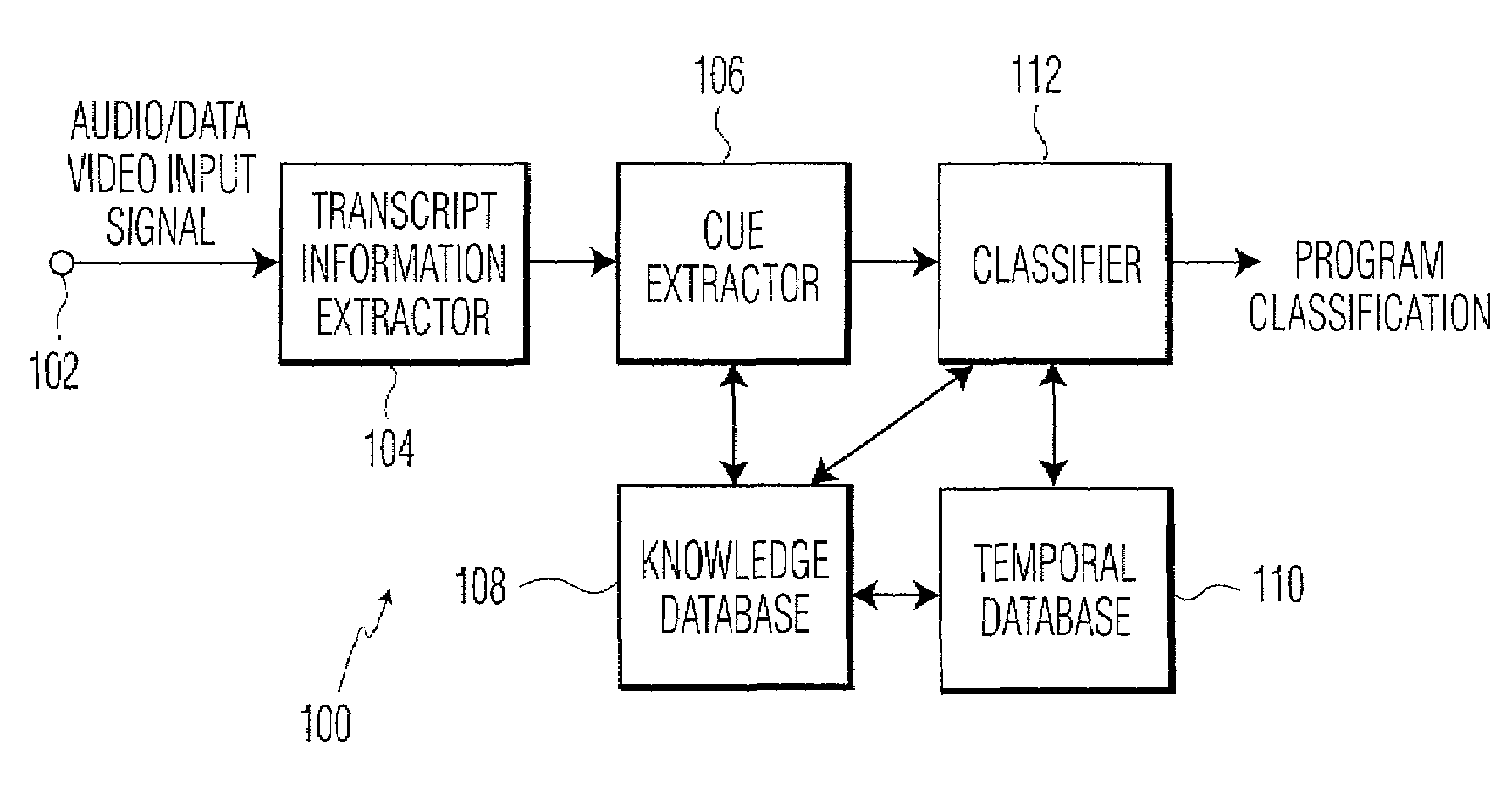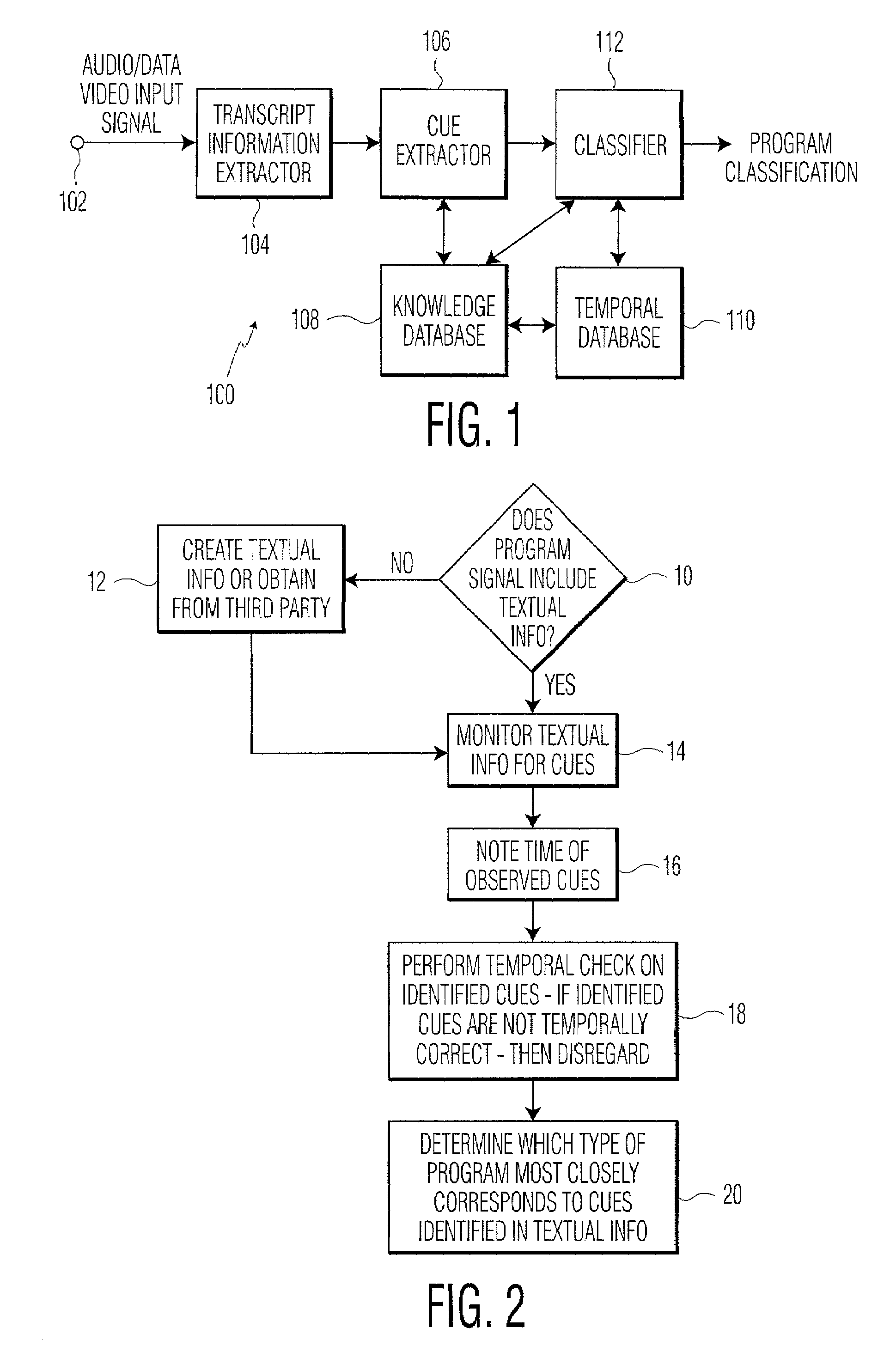Apparatus and method of program classification using observed cues in the transcript information
a technology of transcript information and program, applied in the field of program classification, can solve the problems of difficult finer classification for various retrieval/browsing purposes, and the inability to readily identify the program classification,
- Summary
- Abstract
- Description
- Claims
- Application Information
AI Technical Summary
Benefits of technology
Problems solved by technology
Method used
Image
Examples
Embodiment Construction
[0013]Referring now to FIG. 1 of the drawings, a preferred embodiment of the apparatus of the present invention will now be described. The apparatus 100 includes a video input port 102 for receiving an audio / data / video signal which preferably includes transcript information. Coupled to the video input port 102 is a transcript information extractor 104 which extracts the transcript information from the audio / data / video input signal. If the audio / data / video input signal does not include transcript information (e.g. closed-captioned text), then the transcript information can be generated using known speech-to-text generation techniques (or obtained from a third party source). Once the transcript information portion of the input signal is extracted, it is provided to a cue extractor 106 for analysis.
[0014]The cue extractor 106 is coupled to a knowledge database 108 which contains a plurality of sets of cues, each set of cues being relevant to a particular classification type of program....
PUM
 Login to View More
Login to View More Abstract
Description
Claims
Application Information
 Login to View More
Login to View More - R&D
- Intellectual Property
- Life Sciences
- Materials
- Tech Scout
- Unparalleled Data Quality
- Higher Quality Content
- 60% Fewer Hallucinations
Browse by: Latest US Patents, China's latest patents, Technical Efficacy Thesaurus, Application Domain, Technology Topic, Popular Technical Reports.
© 2025 PatSnap. All rights reserved.Legal|Privacy policy|Modern Slavery Act Transparency Statement|Sitemap|About US| Contact US: help@patsnap.com


